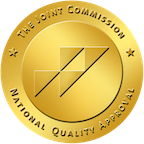Skip To Rehab Listing
With addiction treatment readily available, people struggling with alcohol and drug dependency can get support within their local area.
Substance Abuse Recovery Service Settings and Recovery Methods In Ionia
The types of rehabilitation programs in Ionia can include the following: inpatient addiction treatment centers, short term drug and alcohol rehab centers, long term drug and alcohol rehab facilities, outpatient substance abuse treatment services, detox centers.
Individuals looking for rehab can find conveniently located programs near them with a range of rehabilitation methods designed for successful rehabilitation. These approaches, which include both well-established and newer practices, include the following: dual diagnosis drug rehab, anger management, rational emotive behavioral therapy, group therapy, couple/family therapy, vocational rehabilitation services.
Programs Addressing Special Requirements for Drug and Alcohol Treatment
Dependency can vary based upon circumstances, like the type of drug causing the addiction. Many treatment centers in the Ionia area provide programs designed to customize rehab to a patient's specific needs. These programs consist of the following: treatment for spanish-speaking clients, suicide prevention services, persons with post-traumatic stress disorder, aftercare/continuing care, substance abuse education, active duty military.
Clients who are not sure what their needs are can contact these facilities to access patient programs that can direct them toward the exact program.
Paying For Rehab - Payment & Financing Flexibility
Individuals struggling with addiction come from various economic conditions, but a range of financing alternatives makes recovery economically accessible for anyone. Funding alternatives include the following: private health insurance, cash or self-payment, medicaid, medicare, payment assistance, state corrections or juvenile justice funds, other state funds.
Those searching for rehabilitation can contact a recovery facility to learn more about what financing opportunities are available to them.
Ionia, MI.'s drug and alcohol facilities, services, and payment options offer people who are struggling with drug and alcohol abuse an opportunity to begin a sustainable sobriety plan.
Commonly Asked Questions about Addiction and Treatment
What are some tips for remaining drug free?
Remaining drug-free, especially after overcoming addiction, is a challenging journey. However, with a strong commitment, support system, and coping mechanisms in place, it's definitely possible. Here are some tips:
- Professional Help: Ongoing professional help is crucial, even after you've stopped using drugs. This could involve individual counseling, group therapy, medication, or other forms of treatment recommended by healthcare professionals.
- Support Network: Build and maintain a strong support network. This could include sober friends, family, mentors, or support groups who understand your journey and provide emotional assistance.
- Healthy Lifestyle: Regular exercise, a balanced diet, and ample sleep are all important for maintaining your physical health, which in turn, can support your mental health and resilience.
- Mindfulness and Stress Management: Practices such as meditation, yoga, and breathing exercises can help manage stress and cravings. They can also promote self-awareness, helping you recognize and deal with triggers before they lead to relapse.
- Hobbies and Activities: Engaging in new activities or rekindling old hobbies can help fill time previously occupied by substance use. They can provide a sense of purpose and enjoyment, reducing the desire to use drugs.
- Set Goals: Setting both short-term and long-term goals can provide a sense of purpose and direction. Goals can be related to your career, education, personal development, or other areas of interest.
- Avoid Triggers: Identifying and avoiding situations, places, or people that trigger the desire to use drugs is essential. If avoidance isn't possible, develop coping strategies to deal with these triggers.
- Continuous Learning: Educate yourself about addiction and recovery. Understanding the process can empower you and give you insight into your own journey.
- Positive Self-Talk: Maintaining a positive attitude and practicing self-compassion can help you deal with moments of doubt or guilt.
- Practice Accountability: Stay accountable to yourself and others. This can involve regularly checking in with your support network, attending recovery meetings, or working with a sponsor or mentor.
What are the signs of addiction?
Physical symptoms: Changes in appearance, such as weight loss or gain, poor hygiene, bloodshot eyes, or constricted pupils, can be indicative of addiction. Additionally, the person may display signs of intoxication or withdrawal, such as tremors, sweating, or flu-like symptoms.
Behavioral changes: Addiction can lead to significant shifts in behavior, such as increased secrecy, social isolation, or sudden mood swings. The person may neglect responsibilities, withdraw from activities they once enjoyed, or display uncharacteristic aggression or irritability.
Loss of control: A hallmark of addiction is the inability to control substance use or engagement in harmful behaviors, even when the person expresses a desire to stop. This can lead to increased frequency or intensity of use, as well as unsuccessful attempts to quit or cut down.
Preoccupation: The person may become preoccupied with obtaining, using, or recovering from the effects of the substance or behavior, often at the expense of other aspects of their life.
Risk-taking: Addiction can lead to increased risk-taking behaviors, such as using substances in dangerous situations, driving under the influence, or engaging in risky sexual activities.
Neglecting relationships: Addiction can strain personal relationships, as the person may prioritize their substance use or behavior over their connections with friends and family.
Changes in sleep patterns and energy levels: Addiction can cause disruptions in sleep patterns, leading to insomnia or excessive sleepiness. The person may also experience fluctuations in energy levels, such as periods of hyperactivity followed by lethargy.
Tolerance and withdrawal: Over time, individuals with addiction may develop a tolerance to the substance or behavior, requiring higher doses or more frequent engagement to achieve the desired effect. If the person stops using the substance or engaging in the behavior, they may experience withdrawal symptoms, such as anxiety, irritability, insomnia, or physical discomfort.
Continued use despite negative consequences: A key sign of addiction is the persistence of substance use or engagement in harmful behaviors despite experiencing negative consequences, such as health issues, relationship problems, financial difficulties, or legal troubles.
Neglect of responsibilities: Addiction can cause a person to neglect personal, professional, or family obligations, resulting in job loss, financial difficulties, or relationship problems.
Suicide risks from drug abuse among lgbtq+ youth
Substance abuse significantly increases the risk of suicide, particularly among vulnerable populations such as LGBTQ+ (lesbian, gay, bisexual, transgender, queer, and others) youth. This heightened risk stems from a combination of factors associated with both substance abuse and the unique challenges faced by LGBTQ+ youth. Here's a closer look at these factors:
Mental Health Disorders: Substance abuse often co-occurs with mental health disorders such as depression, anxiety, and bipolar disorder, which are known risk factors for suicide. LGBTQ+ youth experience these mental health conditions at higher rates than their heterosexual and cisgender peers, partially due to the minority stress they face.
Minority Stress: Minority stress refers to the chronic stress experienced by marginalized groups, including LGBTQ+ individuals. It can include experiences such as discrimination, stigma, bullying, and family rejection, which can increase feelings of hopelessness and contribute to both substance use and suicidal ideation.
Substance Use and Suicidal Behavior: Substance use can lead to increased impulsivity, decreased inhibition, and intensified feelings of despair, making a person more likely to attempt suicide. It can also exacerbate feelings of isolation and hopelessness, further increasing the risk.
Social Isolation: Many LGBTQ+ youth feel socially isolated, either because they are not out to their peers or because they face rejection after coming out. This isolation can lead to increased substance use and a higher risk of suicide.
Family Rejection: Family rejection related to an individual's sexual orientation or gender identity can lead to increased substance use and heightened suicide risk. LGBTQ+ youth who do not receive support from their families are particularly vulnerable.
Lack of Access to Mental Health Services: Many LGBTQ+ youth struggle to access mental health and substance use treatment services, which can help manage risk factors for suicide. Barriers to access can include lack of insurance, stigma, and a shortage of providers who offer LGBTQ+-inclusive care.
Intersectionality: LGBTQ+ youth who belong to other marginalized groups (e.g., racial/ethnic minorities) often face additional layers of discrimination and stress, which can further increase their risk of substance abuse and suicide.
Efforts to prevent suicide among LGBTQ+ youth include providing access to culturally competent mental health and substance use treatment, fostering supportive environments in schools and communities, and advocating for policies that protect LGBTQ+ youth from discrimination and harassment. It's also crucial to provide support for families of LGBTQ+ youth, as family acceptance has been shown to protect against suicide risk.













